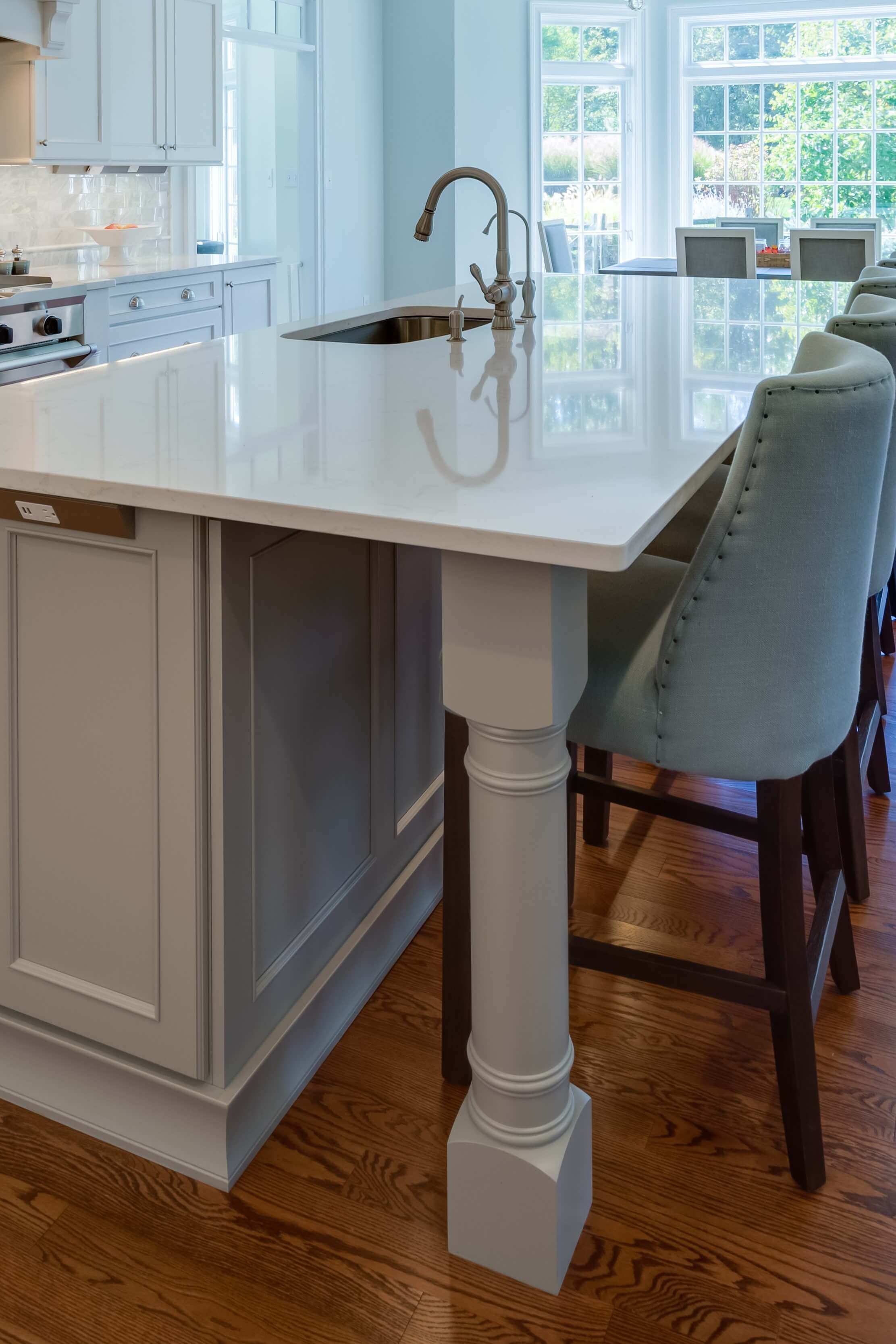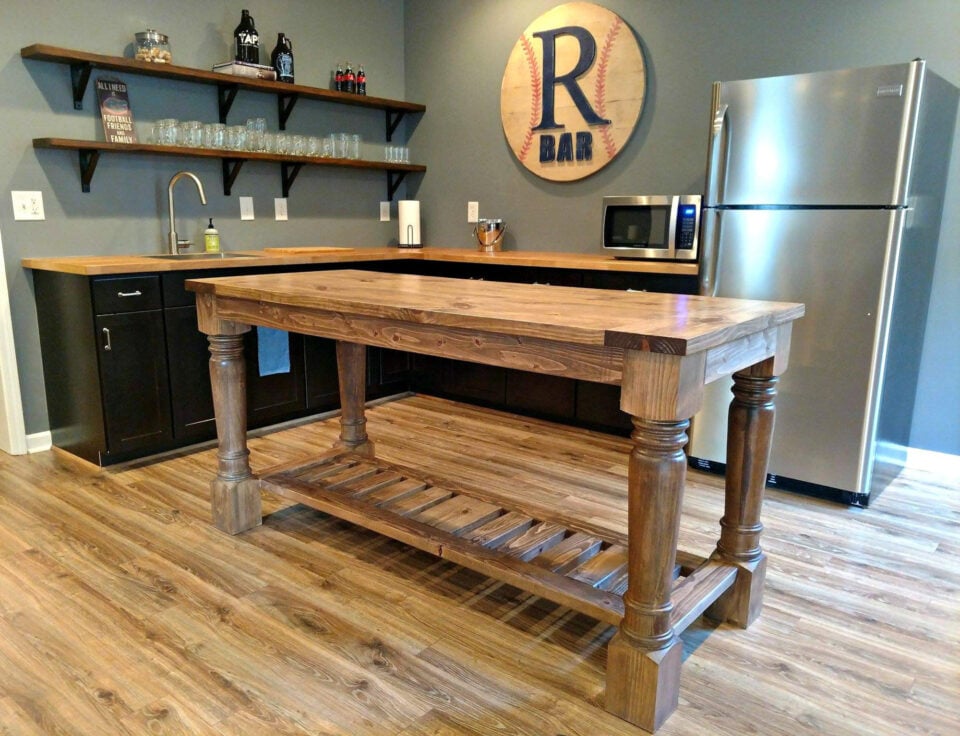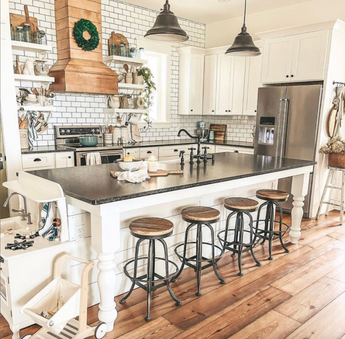Just how to Integrate a Kitchen Island Leg right into Your Kitchen Remodel
Just how to Integrate a Kitchen Island Leg right into Your Kitchen Remodel
Blog Article
The Relevance of a Sturdy Kitchen Island Leg in Creating a Useful Cooking Location
A tough kitchen island leg offers as an essential component in developing a functional cooking setting, providing essential assistance for both the kitchen counter and various kitchen area activities. As kitchens evolve right into multifunctional locations for food preparation, dining, and socializing, the selection of products and layout factors to consider for island legs comes to be significantly vital.
Benefits of Sturdy Island Legs
Giving vital support, strong kitchen area island legs play a critical duty in improving the functionality and sturdiness of kitchen islands - kitchen island leg. These legs not just bear the weight of the countertop and any kind of extra items put on the island, but also add to the overall stability of the structure. A well-supported cooking area island makes sure that it stays functional and upright, also under heavy use, which is especially important in hectic cooking area settings
Furthermore, strong island legs can enhance the visual appeal of the kitchen area. They give a solid structure that can match various layout styles, from modern to typical. This flexibility permits house owners to tailor their kitchen area islands according to individual preference while making sure that the structural honesty stays uncompromised.
In addition to their supportive role, durable kitchen area island legs can likewise improve safety. Eventually, spending in tough kitchen island legs is essential for a practical and aesthetically pleasing cooking location.
Materials for Kitchen Area Island Legs
When selecting materials for kitchen area island legs, toughness and visual appeal are crucial aspects to take into consideration. The most usual products consist of wood, metal, and crafted wood, each offering special advantages.
Wood, such as oak, maple, or cherry, is a timeless choice due to its toughness and classic charm (kitchen island leg). It can endure considerable weight and is immune to wear, making it optimal for high-use kitchen area atmospheres. Furthermore, hardwood can be tarnished or repainted to enhance various kitchen area styles
Metal legs, commonly crafted from stainless steel or functioned iron, supply a modern-day and industrial appearance. They are incredibly solid and can sustain considerable loads while being immune to wetness and warm, which is beneficial in a cooking area. Metal legs can likewise be easily cleansed, enhancing their usefulness.

Style Considerations for Stability
The selection of materials for kitchen area island legs directly influences the design factors to consider for stability. When developing a cooking area island, it is paramount to examine the weight-bearing capacity of the picked products. Heavier materials, such as strong home wood or steel, usually provide better stability, specifically under the anxiety of everyday use.
Additionally, the leg layout have to incorporate appropriate geometry to enhance stability. A larger base enhances the support location, decreasing the threat of tipping or tottering. Factor to consider needs to likewise be provided to the height of the legs; disproportionate leg lengths can lead to inequality, jeopardizing the overall stability of the island.
In addition, the circulation of weight across the island is vital. Ensuring that the leg placement lines up with the heaviest elements, such as countertops and home appliances, will even more improve stability.
Upkeep Tips for Longevity

Depending on the product of the legs-- whether wood, steel, or composite-- ideal cleansing techniques ought to be employed. Steel legs may call for a light gloss to prevent corrosion and keep their gloss.
Furthermore, tightening screws and screws consistently can ensure stability and prevent wobbling. If the kitchen area island experiences heavy usage, think about strengthening the legs with added braces or sustains to improve sturdiness. Applying a safety surface or sealant can protect versus dampness and stains, prolonging the life-span imp source of the legs. By adhering to these upkeep ideas, house owners can ensure their kitchen area island legs stay robust and functional for years ahead.
Picking the Right Leg Design
Normal upkeep ensures that kitchen island legs remain functional and sturdy, however picking the best leg style is just as important for both appearances and support. Homepage The option of leg design can significantly affect the total layout and harmony of your kitchen.

Performance is another important element. Thicker legs or those with a durable base can support larger kitchen counters and tools, boosting the island's energy. Conversely, slender legs might develop an airy look, ideal for lighter layouts yet possibly less helpful.
Final Thought
In summary, the significance of tough kitchen area island legs can not be overstated in the production of a practical cooking area. These legs supply crucial support, improve security, and contribute to the total aesthetic of the cooking area.
A tough kitchen area island leg offers as a fundamental element in developing a practical cooking environment, providing required support for both the kitchen counter and numerous kitchen activities.Supplying essential support, strong kitchen island legs play a pivotal function in boosting the capability and durability of kitchen islands. Inevitably, investing in durable kitchen island legs is vital for a practical and visually pleasing cooking location.
Consideration should likewise be given to the elevation of the legs; out of proportion leg sizes can lead to discrepancy, compromising the total stability of the island.
Wooden legs offer heat and a timeless appearance, while metal legs provide a industrial and modern-day feel.
Report this page